
Upon my initial encounter with the perplexing issue of needing to reset a solar inverter, I found myself engulfed in a whirlwind of anxiety. The unexpected shutdown of the entire system and a notable drop in efficiency felt overwhelming. Perhaps you too have experienced that fraught moment, staring at the persistent error messages on the inverter, with no idea where to turn. To assist users like myself, I’ve meticulously compiled an extensive guide on safely resetting a solar inverter.
Primarily, safety is paramount. Before embarking on any intervention, it’s essential to cut off power to all associated systems. This step not only mitigates the risk of electric shock but also safeguards the equipment itself. After switching off the main solar power switch, along with the DC and AC disconnects, I typically allow a waiting period of five to ten minutes. This pause is critical, as it permits any residual electricity to dissipate safely.
The restart process ought to be executed systematically. By turning on each switch in an orderly fashion, we can prevent any sudden surges of current that might arise. During this procedure, the moment I hear the familiar crackle, I am reassured that I’m on the right path.
Once the reset is complete, vigilant monitoring of the system becomes crucial. Keeping an eye out for any new error messages is essential. If you are like me, taking the time to carefully assess the performance will often reveal that the issues have seemingly vanished.
By following these safety protocols to reset your solar inverter, you can resolve most common problems and ensure your system returns to optimal operation. Should issues persist even after these measures, do not hesitate to reach out to a professional technician. This decision is undoubtedly the safest course of action. I hope this guide serves you well; if necessary, act swiftly to restore your clean energy system!
It’s safe to reset a solar inverter without cutting off the power first.False
Always cut off power first to prevent electric shock and protect equipment.
Waiting five to ten minutes before restarting helps dissipate residual charge.True
This waiting period is crucial for safety before working on the inverter.
Why Should You Reset Your Solar Inverter?
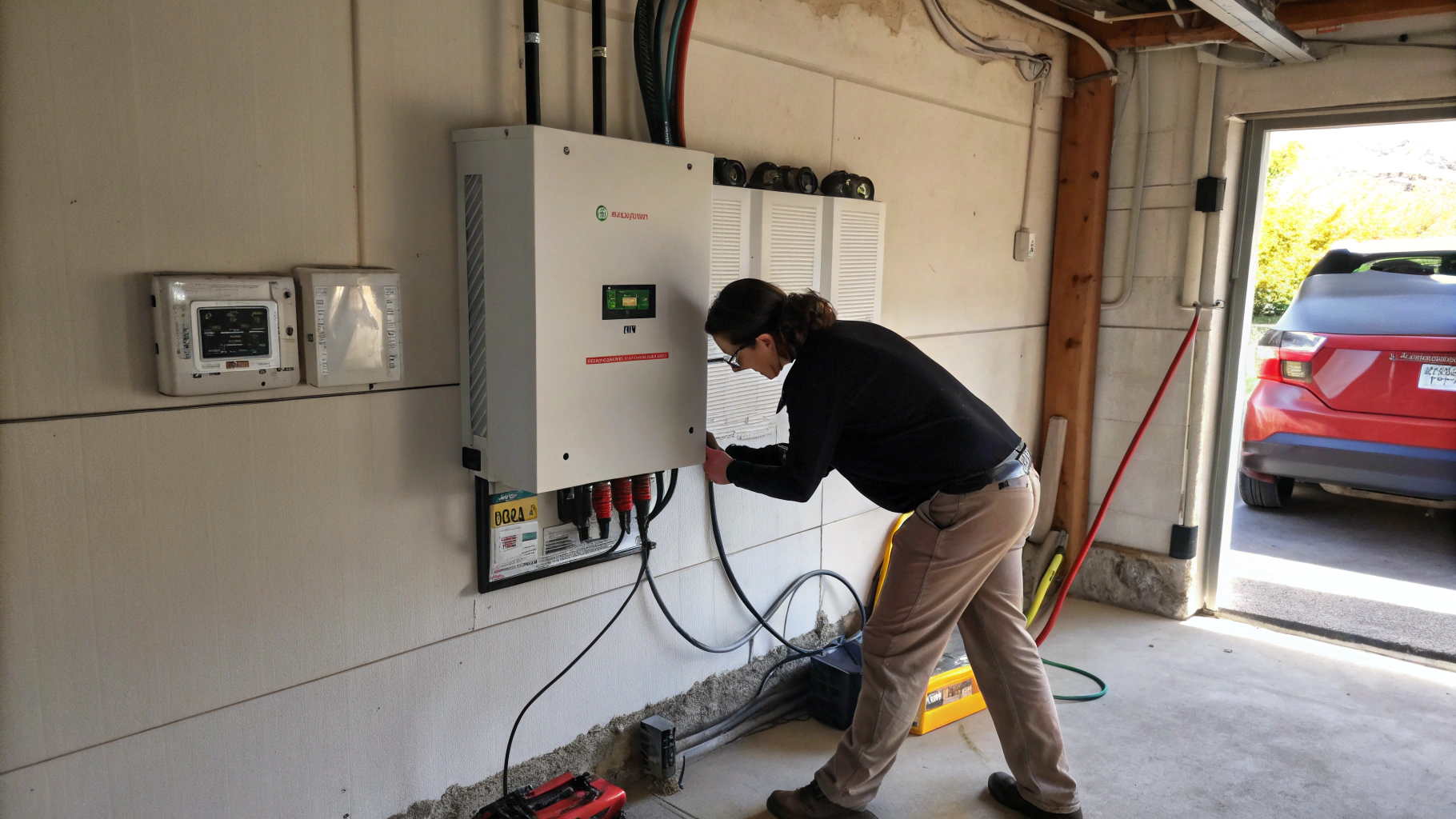
The first time I encountered issues with a solar inverter, I was enveloped in confusion, unsure of where to begin unraveling this technological puzzle. This experience opened my eyes to the reality that many others share the same sense of bewilderment. Perhaps you’ve faced similar frustrations—struggling with cryptic error codes or declining performance, all while questioning why a reset is necessary for your solar inverter. Through my extensive research, I discovered that this troubleshooting step is often far more straightforward and effective than one might initially expect.
To start, resetting a solar inverter emerges as a common yet vital method for addressing malfunctions. Whether the system presents error codes, unexpectedly shuts down, or displays diminished performance, a reset can remedy most minor glitches. Not only does it restore the system to its normal operational state, but it also allows me to reassess system performance, ensuring optimal efficiency.
Allow me to share some essential steps: first, ensure you are in a safe, dry environment, then cut off power to the unit and wait for several minutes before restarting it. This simple act can sometimes drastically enhance system performance. However, if the issue persists after your attempts at resetting, I highly recommend reaching out for professional technical support. Engaging with your vendor or manufacturer can often yield the specialized assistance necessary to resolve the complexities at hand.
Key Insight: In my experience with resetting a solar inverter, I’ve found it to be an effective solution for common errors and a means to restore normal functionality. Nevertheless, if challenges remain unresolved, seeking professional help is crucial.
I hope these insights prove valuable to you. If you find yourself in a similar predicament, I encourage you to give these strategies a try—they might just illuminate the path forward. Join us for further learning and discussions, and discover more about maintaining solar systems and maximizing their efficiency.
How Can You Prepare Safely for a Resetting Procedure?
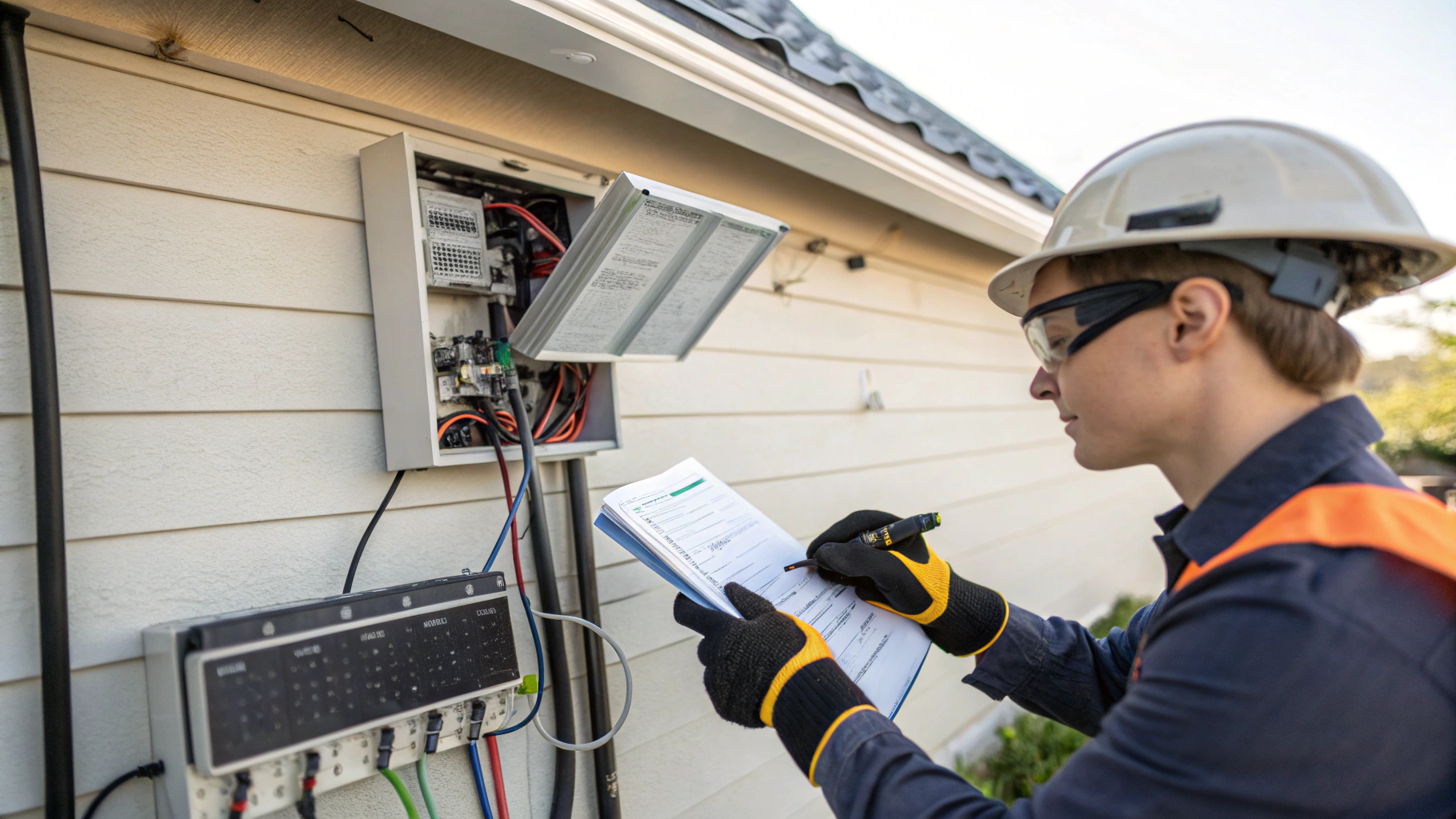
Reflecting on my initial encounter with the intimidating challenge of resetting my solar inverter, I recall the wave of overwhelm that washed over me. Like many of you, I found myself grappling with the dual pressures of ensuring safety while achieving an effective reset. The source of my unease stemmed from a lack of clarity about the procedure itself. However, after extensive research and a few trial-and-error attempts, I stumbled upon a method that not only guarantees safety but also enhances reliability.
I feel compelled to share a structured approach that has proven effective for me. First and foremost, it is imperative to completely power down your system to mitigate any risk of electric shock. Although this may seem like an obvious step, disconnecting all power sources is essential for a secure reset. I also make it a habit to consult the inverter’s manual beforehand, as each model possesses its unique characteristics and stipulations.
Once everything is powered down, I carefully disconnect and then reconnect all cables to reset the system connections. This seemingly simple action often resolves a multitude of minor issues. After the reset, I typically conduct a basic functional check to confirm that every component is operating as it should.
Incorporating safety as a non-negotiable priority, my approach aligns well with general safety protocols akin to those for computers or airbags—remember to disconnect, power down, and refer to the manual. It’s important to note that handling technology doesn’t always necessitate a specialist if you exercise caution.
To encapsulate, my streamlined method for resetting a solar inverter involves powering down the system, safely disconnecting, and referencing the manual for model-specific guidance that ensures both safety and effectiveness. Always proceed with mindfulness, and when uncertain, don’t hesitate to consult a professional.
I sincerely hope this guidance makes your resetting experience less burdensome and more effortless. Give these strategies a go, and I’m confident that you’ll observe a notable improvement.
What is the Process to Turn Off the Inverter?
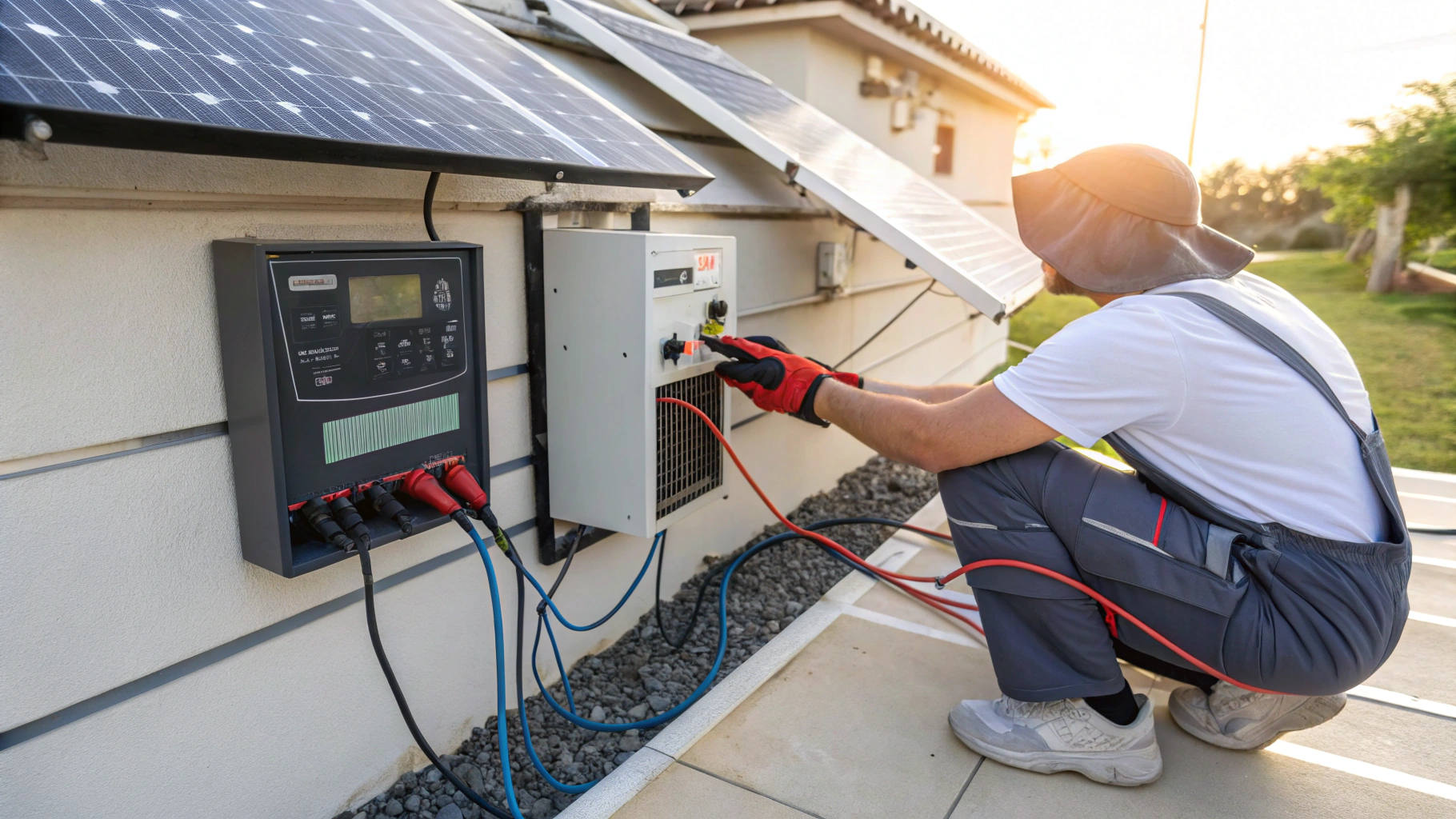
The first time I faced the challenge of resetting my solar inverter, I must admit, I was somewhat daunted by the task. It wasn’t something that belonged in my daily routine; however, routine maintenance demanded that I take the plunge. If you find yourself in a similar situation, grasping the exact steps to reset a solar inverter can not only alleviate stress but also help you avoid costly errors. Allow me to share the process I navigated to safely turn off and reset my solar inverter.
At the outset, it’s vital to appreciate the gravity of this undertaking. Resetting your inverter isn’t an everyday chore; it’s primarily reserved for particular situations—think maintenance, troubleshooting, or even emergencies. The first pivotal step in my journey was to pinpoint the location of my inverter. It was nestled conveniently close to the main electrical panel, just as outlined in the manual. Diligently reviewing the manual proved invaluable, providing me with tailored instructions specific to my inverter model.
With the inverter now in view, my next action was to turn off the AC disconnect. This switch, easily accessible near the inverter, was flipped to the ‘Off’ position, effectively halting the flow of alternating current from reaching my home’s electrical panel. With AC power securely turned off, I moved on to switch off the inverter itself. This required toggling the main power to ‘Off’ and then pressing and holding the shutdown button until I was confident it was completely powered down.
Lastly, the DC disconnect cannot be overlooked. It plays a crucial role in severing the direct current flow from the solar panels. These tasks transcend mere button flicking—they are fundamental to ensuring safety. For added protection, I also disabled dedicated breakers in my main electrical service panel. After completing these actions, I made sure to exercise patience, waiting approximately 5 to 10 minutes to allow the inverter and microinverters to conclude their power-down cycle.
The necessity of confirming the shutdown status is paramount. I took the time to check the display panel, ensuring every light was extinguished—no indicators of power remained. Prioritizing safety, I donned rubber-soled shoes and employed insulated tools, undertaking the entire process during daylight hours to optimize visibility.
Ultimately, resetting a solar inverter encompasses a methodical series of steps that prioritize safety and meticulousness. Always refer to your inverter’s manual for precise guidance, and when uncertainty looms, don’t hesitate to seek professional assistance to avert any electrical setbacks. I hope my experience serves as a helpful roadmap for you as you embark on your own resetting journey.
How to Restart Your Solar System Effectively?

The first time I faced the challenge of restarting my solar inverter, I was quickly engulfed by the multitude of procedures and safety measures involved. It wasn’t simply a matter of flipping a switch; rather, it demanded a comprehensive understanding and acute attention to safety protocols. If you find yourself similarly motivated to ensure your solar system operates seamlessly, join me as I recount my journey and the valuable lessons I gleaned along the way.
Step by Step: How to Safely Reset Your Solar Inverter
Attention: Have you ever come across a situation where your solar system seemed completely unresponsive? When I encountered such a scenario, I discovered that restarting my solar inverter was far from the straightforward task I had anticipated.
Interest: So, what was my course of action? I initiated the process with precision, first methodically shutting down my solar system. The initial step involved disconnecting the solar panels using the DC isolator, followed by powering down the inverter itself. I soon realized that these actions were not mere switch flips; they were vital to safeguarding the equipment and ensuring my own safety.
Desire: When my inverter finally hummed back to life after a careful restart, I experienced an exhilarating sense of relief and achievement. Observing its performance through the display and witnessing it function at peak efficiency was immensely gratifying. Resolving any error codes or status messages felt significantly more manageable with a methodical approach.
Action: Are you prepared to get your solar system back on track? Embrace these cautious yet straightforward steps: prioritize safety, execute a systematic shutdown, troubleshoot any issues, and keep an eye on the outcomes. My hope is that these insights empower you to manage your solar system with confidence and expertise.
To encapsulate it all, here’s the key takeaway: Safely resetting a solar inverter requires a thorough shutdown and restart process while vigilantly monitoring the system’s operational integrity. I trust this guide provides you with the fundamentals. Embrace these strategies, and you’ll soon witness your system operating flawlessly.
What Should You Monitor Post-Restart?
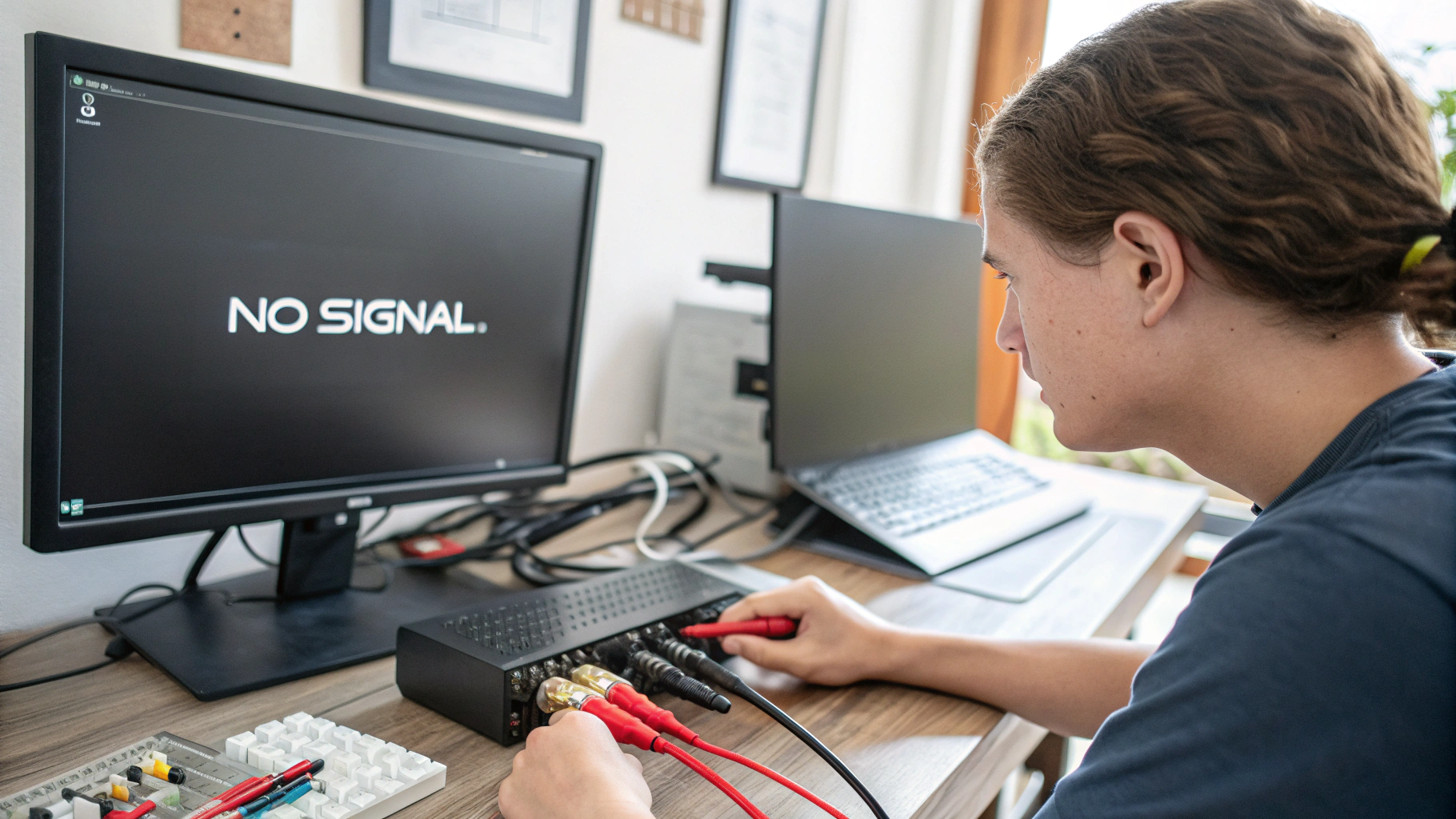
The first time I grappled with the vexing issue of a monitor displaying ‘no signal’ after my computer rebooted, an overwhelming wave of frustration and helplessness swept over me. This is a predicament many of us are familiar with; often, it can be traced back to simple settings rather than hardware malfunctions. I soon came to realize that the remedy lay in a systematic diagnostic approach, one that would save me both time and a considerable amount of hassle.
To kick things off, I diligently ensured that the HDMI or DisplayPort cables were firmly connected on both ends, aware that a loose cable often serves as the chief culprit behind the ‘no signal’ conundrum. Next, I turned my attention to the monitor’s input source settings, verifying that they aligned perfectly with the ports used by my computer. Following this, I made it a point to update my graphics card drivers—outdated drivers can be unwittingly responsible for various display issues.
Digging deeper, and recalling past experiences, I delved into the BIOS/UEFI settings, double-checking the configuration for the primary display output. These methodical steps empowered me to resolve the monitor’s no signal issue within just minutes. To spare you the same frustration, I wholeheartedly recommend following these steps; I have every confidence you’ll witness positive results. I hope this advice assists you, allowing for a smoother navigation through similar tech challenges. By verifying your connections, examining settings, and refreshing your drivers, you too can adeptly tackle the ‘no signal’ dilemma. Why not give it a try?
When to Seek Professional Help?
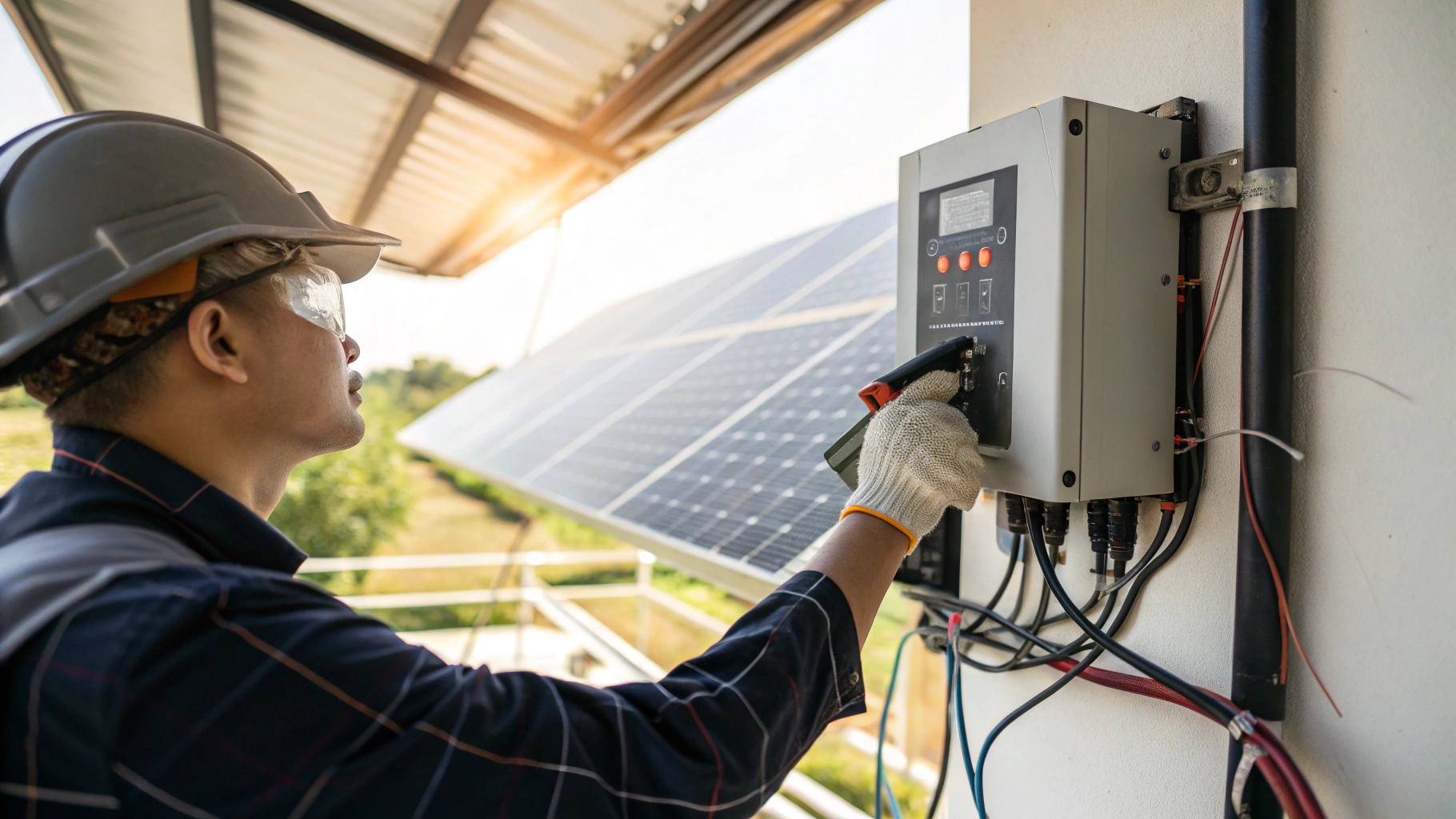
When I embarked on my first attempt to reset the solar inverter, I found myself grappling with uncertainty. It struck me in that moment, the importance of methodical approach; just like managing mental health issues, an improper reset can spiral into greater complications and anxiety. Although resetting a solar inverter might seem straightforward, it demands a composed mindset and adherence to the correct procedures in order to ensure both efficiency and safety.
Following a power outage, I discovered that the inverter had ceased to function, prompting the realization that a reset was imperative. The significance of this operation mirrors the quest for help we undertake when confronted with mental health challenges. Just as observable changes in behavior and emotions call for vigilance and intervention, a malfunctioning inverter requires resetting to restore its normal operation. In my journey, I gleaned invaluable insights by thoroughly scrutinizing manuals and online resources, which equipped me with a plethora of techniques.
Core Message: Mastering the process of resetting a solar inverter empowers us to efficiently restore its function when it falters, thereby ensuring the seamless operation of our home solar system.
As I delved deeper into this issue, it became clear that it involved more than just pressing a few buttons; I might also need to inspect other related devices. I genuinely hope these tips will assist you in successfully resetting your solar inverter when the need arises. When faced with insurmountable technical problems, consider reaching out to professionals—much like we would seek professional assistance for serious mental health concerns. Believe me, this approach can alleviate your frustration and ensure the smooth functioning of your equipment.
Conclusion
In this comprehensive guide, we have explored the critical steps for safely resetting a solar inverter, emphasizing the importance of prioritizing safety and adherence to proper procedures. By systematically cutting off power and allowing appropriate waiting periods, users can effectively resolve common issues that may arise, restoring their system to optimal functionality.
Moreover, vigilant monitoring post-reset is vital to ensure the inverter operates correctly, and consulting a professional technician is advised in cases of persistent problems. Remember, taking these proactive measures not only enhances efficiency but also safeguards both the equipment and your investment. If you encounter any complex issues, don’t hesitate to reach out to an expert for assistance!


